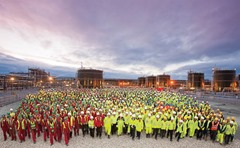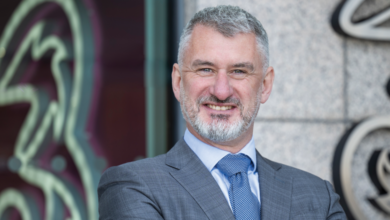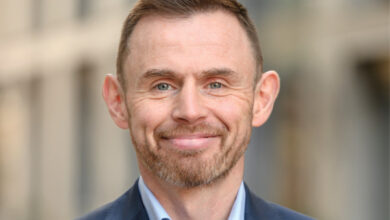Releasing Ireland’s untapped potential
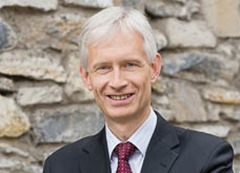 Shell Ireland MD Michael Crothers sees great opportunities for Ireland but also room for improvement in its regulatory system, how developers engage with communities and the level of public confidence in energy projects. He shares his perspectives with Owen McQuade.
Shell Ireland MD Michael Crothers sees great opportunities for Ireland but also room for improvement in its regulatory system, how developers engage with communities and the level of public confidence in energy projects. He shares his perspectives with Owen McQuade.
While the indigenous energy sector is at present underdeveloped, Shell’s Managing Director Michael Crothers sees “tremendous opportunities” ahead for Ireland’s wind, wave, offshore oil and gas and onshore shale resources.
The Canadian states: “When you look at the geology and compare it with Newfoundland, which apparently has more in common geologically with Ireland than the North Sea, there may be substantial opportunities as yet undiscovered.”
Shell has no interests in shale gas in Ireland but this might be developed “in a safe and environmentally acceptable manner.” In the USA and Canada, technology has been successful in extracting shale gas and managing the environmental concerns at the same time. Many analysts estimate that the USA will be self-sufficient in energy by 2020.
Shale gas has also driven job creation (600,000 jobs in 2010, according to the IHS consultancy) and is allowing the US to repatriate manufacturing operations from overseas: “It’s something that, I think, the Irish Government could consider as being part of their energy system in the longer term.”
The potential for energy exports to Great Britain also stands out as a strategic opportunity as Ireland’s “big neighbour with a very high energy appetite” decommissions nuclear and coal-fired power plants. Crothers adds: “Ireland has a once-in-a-generation opportunity to tap into that and provide green power but also, potentially at some stage, oil and gas exports depending on whether exploration is successful.”
Taking a Europe-wide view of its energy position, he concludes that few other countries have as much “untapped potential beside a very large market.” Crothers points to two enablers for “unleashing that opportunity” in Ireland: streamlined regulation and building coalitions of support.
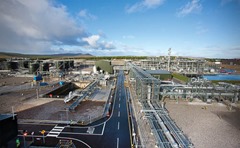 The current regulatory regime is “quite complex and adversarial” and “doesn’t really facilitate” constructive talks between developers, communities and the regulators. In some other jurisdictions, parties are encouraged or in some cases obliged to sit together “at the earliest stages of the project to make sure that interests are upheld across all stakeholders.”
The current regulatory regime is “quite complex and adversarial” and “doesn’t really facilitate” constructive talks between developers, communities and the regulators. In some other jurisdictions, parties are encouraged or in some cases obliged to sit together “at the earliest stages of the project to make sure that interests are upheld across all stakeholders.”
If there is no resolution, parties go to mediation or court as a last resort. “Those processes can run anywhere from 18 months to two years,” Crothers explains. “The good thing about that from a developer’s perspective is that there’s certainty. You know within a relatively short timeframe what the constraints will be and if you can proceed or not.”
Simplifying the regulatory process does not mean reducing standards, which must remain high. Crothers recognises that government is working hard to streamline regulation but adds: “I think the pace could be improved as other countries are acting more quickly to simplify their processes.”
Building coalitions is a second key enabler. Crothers senses a certain “lack of initiative” by some developers in reaching out “pro-actively” to communities at the conceptual stage. “Certainly, in Corrib, we didn’t do this well initially but we’re doing it much better now,” he reflects.
Alongside this outreach, developers should build coalitions with NGOs, government agencies and other key stakeholders, explain the benefits of projects and “get people aligned behind them.” Energy developments tend to be controversial and politically risky, which makes public acceptance important for deploying new technology. Forging coalitions can give politicians the reassurance they need to act.
He adds: “Impartial professional bodies like Engineers Ireland have a key role to build these alliances which will unlock the investment.” Coalitions can also play a part in enabling infrastructure e.g. the high voltage power lines and access to ports necessary for delivering wind energy. Such projects “can be disruptive but, on the other hand, they can be enormously empowering and create tremendous opportunity for the country if done properly.”
If objections dominate, the planned investment will “go idle” or take “inordinately long to bring it to fruition.” For example, nine years is “just too long” for building a high voltage power line in Ireland compared to other jurisdictions and this deters investors.
Role of technology
Getting people to accept new technology is, in his view, more important than the actual technology per se. “The bigger hurdle,” he explains, “is about how to explain complex technology to the public and how to make sure there is support for deploying that technology.”
Crothers continues: “All projects are a balance of the social, the environmental and the economic, and I think engineers can explain [technology] because they understand those realms effectively. “They can explain the trade-offs and help people have a reasoned debate about the balance between those three pillars of investment.”
More emphasis on communication skills and stakeholder management in universities would be helpful, meaning that engineers would “come out better equipped to have the discussion about technology in a constructive way” and lead the debates.
“In the energy space, we are facing a doubling of demand in the next 40 years while reducing greenhouse gas emissions,” Crothers continues. “And how can we meet that burgeoning demand without us looking at new technology and continuing to refine and improve the technology we already have in the hydrocarbon space?”
Newfoundland, in eastern Canada, has been influenced by Celtic emigration from Scotland and Ireland. Until the 1980s, it relied heavily on forestry and fisheries but when the cod stocks declined, the province turned to offshore oil and gas exploration. The sector was incentivised to drill and develop the first field, after which the Government of Newfoundland increased its take of the value as the industry developed.
Oil was found at Hibernia in 1979 but the field only came into production in 1997, after lengthy discussions on sharing the costs and benefits. Since then, four more fields have been brought online, delivering over 1.4 billion barrels of oil. This has transformed Newfoundland from being a “have not province” to a very prosperous one.
The sector has created 5,000 jobs directly and thousands more in construction. “Generations of emigration have come to an end,” he adds. “Kids can stay home and a similar thing is happening, in a microcosm, in Mayo. With so many Mayo people working on the Corrib project, they don’t actually have to leave.
“Those are incredible benefits. Being able to stay home and have your families intact is tremendously important. At a high level, you look at what’s happened at Newfoundland and think: ‘Couldn’t something like that happen here in Ireland?’”
Crothers thinks that the Irish Government has struck a good balance between incentivising investment and taxing the profits. However, he is disappointed by the “one-sided view” of the fiscal regime expressed in Dáil debates. Ireland is often compared with Norway, which has an 80 per cent tax on profits from an “extremely well developed” oil and gas sector. Norway also allows the developer to write off 79 per cent of its exploration costs.
“If they drill a dry hole, they get almost 80 per cent of that money back,” he notes. In Ireland, there is no return on lost investment and an unsuccessful well can cost up to €200 million. Newfoundland’s administration paid for around half of the initial investment in Hibernia (approximately €3 billion) and has now “reaped the rewards very handsomely.”
Corrib benefits
Strategically, the Corrib field is Ireland’s second gas discovery and could supply 60 per cent of its requirements (at peak) in a country that imports 95 per cent of its gas. Ireland also needs gas to generate two-thirds of its electricity.
1,250 full-time jobs have been sustained through the construction phase and the field will make a net contribution of €6 billion to Irish GDP over its 20-year lifespan.
In the long term, individuals and contractors are acquiring skills that they can use elsewhere. Civil engineering firm Roadbridge, for example, has used skills from Corrib to compete successfully in the Shetlands and New Caledonia. Crothers has also met young people who have learned trades and then gone on to work overseas.
“Ideally, they’d be able to stay in the country but nevertheless the skills that they’ve learned on the project are highly portable and make them very employable elsewhere,” he comments.
Over 50 students have been taken on through internships with some returning to work on the project after graduation. An additional 60 students have been supported through a third level scholarships programme. All four schools in the parish are also supported, with help for writing CVs and preparing for job interviews. An engineering contractor, Mercury, delivers apprenticeships through the coláiste in Rossport.
As for social investment, he adds: “We listened, we changed and we’re building a real positive legacy for the future. That includes the jobs and skills but also the educational relationships and partnerships we’ve made with the community.”
Shell has invested over €6 million in community and sporting organisations. An €8.5 million Community Gain Investment Fund is administered by Mayo County Council. €19 million has been invested in local roads, which helps to support tourism.
On policy, Crothers is encouraged that Minister Pat Rabbitte will be bringing forward a new white paper on energy in 2014. “I hope that’s a statement of intent in terms of the energy sector and the pivotal role that energy can play in the economic future of Ireland,” Crothers says. “It may set the foundation for investment that could have a transformative effect in terms of the possibilities we can offer to the next generation of students, employment and other opportunities. Certainly, we’re keen to play a supporting role in helping to enable that future.”
Energy, as he observes, is underdeveloped in Ireland but the island’s hospitality and agricultural sectors offer a glimpse of how the whole country can grow to its fullest potential. Crothers concludes: “If Ireland had the confidence in other sectors that it has in the hospitality sector, what amazing things could be done?” he notes from his travels around the country, adding that Irish hospitality is “unparalleled” in Europe.
Corrib makes progress
2013 is the busiest year in the Corrib project since 2009, with up to €300 million being invested. In June, the project employed 1,340 people, of whom 660 are from County Mayo. Offshore, Shell undertook a 3D seismic survey between March and June which will help the company understand the gas reservoir better and position the final development well, to be drilled in 2017.
The 83km umbilical ‘extension cord’ which connects the field to the shore control room has been installed. Fibre optics and hydraulic cables allow Shell to remotely manipulate and monitor the wells. The West Navigator drill ship was on station in July, to undertake well maintenance in advance of First Gas. Subsea control modules are to be installed in September.
The terminal was largely completed in 2010 and remaining work will be complete in November. The terminal will then be tested using gas from the Bord Gáis network in April-May 2014.
The 4km onshore portion of a pipeline is a traditional ‘cut and fill’ installation which should be completed by year end. This connects to the 4.9km tunnel under Srruwaddacon Bay. At Glengad, Shell has completed the landfall valve installation which has isolation valves between the offshore and onshore pipelines. A reception pit for the tunnel boring machine (TBM) is under construction; this will be removed after the TBM completes its excavations in spring 2014. First gas is planned for late 2014 or early 2015.
A chemical engineer, Michael graduated from the University of Alberta in 1984 and has worked with Shell for 25 years in almost all aspects of the sector. He hails from Calgary, the “energy capital of the west” and home of the famous Calgary Stampede rodeo festival. The city has an attitude which would be familiar in western Ireland: “a mistrust of the east and the capital, do things your own way, very resourceful.”
He has worked in over 40 countries. As a Shell Vice-President, he was responsible for sustainable development and the safety and environmental aspects of the downstream business. This gave him a strong interest in “how to do these projects well” e.g. by gaining early acceptance from First Nations peoples in Canada for heavy oil projects.
Michael and his wife live in Ireland but their three children live in Canada. The family is on Skype almost every weekend and can relate to Irish families separated by emigration. His parents came from County Down and he takes pride in his Irish citizenship. Personal interests include cycling, running, travelling and reading: most recently ‘Civilisation: The West and The Rest’ by Niall Ferguson.

